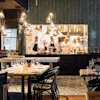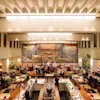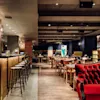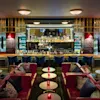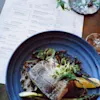Popular restaurants and bars in Oslo
There's been a food revolution in Norway in recent years and it has left a clear mark on restaurant life in the capital. In Oslo you'll find everything from restaurants whose doors have been open for many years to new eateries that offer exciting flavours from all over the world. Welcome to Oslo!
Gourmet food and drink aplenty
As Oslo has become a culturally rich capital that boasts a new opera house, a new Munch Museum, a new main library and concerts galore, a large number of exciting restaurants have also popped up around the capital. Here you just have to pick and choose between classic Norwegian dishes with a modern twist and world-class international flavours. Oslo offers everything from gourmet gems from Asian cuisine to cosy little bars with exciting drinks and small dishes for the hungry.
It's okay to be demanding in Oslo
Oslo is a city where you can live in the moment. If you suddenly feel like having breakfast outdoors, you can visit Ekspedisjonshallen at Sommerro and help yourself to their plentiful buffet – or how about having brunch at Atlas Brasserie & Café on the Amerikalinjen? In Oslo, you are allowed to be demanding, so if, let's say, your date is craving grilled food, spectacular views and a glass of something nice, Thief Roof Grill is a great choice.
Fantastic food across the city
There is not exactly a shortage of bars in the capital, so a pleasant evening might end at the Hub Bar or the award-winning cocktail bar, Pier 42, both of which are located right outside Oslo Central Station. In Oslo, however, you don't have to be in the city centre to have good food and drink experiences. There are also a number of good options a short bus or underground ride away, like Top Floor Restaurant at Økern. Welcome to Norway's food mecca!
Oslo
Restaurants & Bars
Teatro
Shutter Bar
Thief Restaurant
Atlas Brasserie & Café
Ekspedisjonshallen
Bella Bambina
Izakaya
Thief Roof Bar & Grill
Ahaan
Norda Cocktail Bar
The Social Gardermoen
To Søstre
Barramon
TAK Oslo
Rodins
The Social Hasle Linie
Norda
Pier 42
Hub Bar
Gustav
The Social Hotel 33
Vinbaren
Thief Bar
The Social Oslo Airport
Kafé Lucy
The Social Expo
Plah
SELECTED EXPERIENCES



